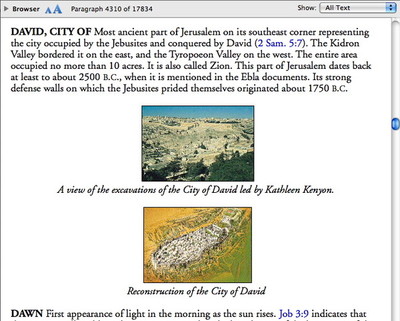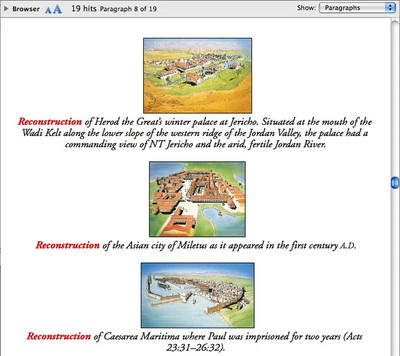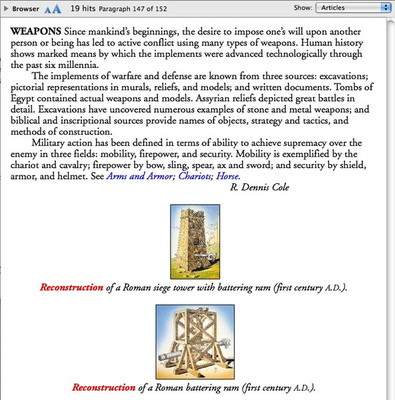In the past couple of posts, I’ve argued that Accordance goes beyond mere electronic delivery of print books. Instead, we leverage the flexibility and power of the computer to give you new ways to interact with your books. In the previous post I showed how Accordance gives you unparalleled control over the appearance of the text. In this post, I want to talk about how Accordance lets you control the context of what you see.
When viewing the text of the Bible, what you enter in the search entry box determines what you see in the display pane beneath it, and by default, only the hit verses are displayed. But you can control how much of the surrounding context is displayed through the Add Context pop-up menu. Choosing a number displays that number of verses before and after each hit verse, while choosing All will display your search results in the context of the entire Bible. If you always want to see a particular amount of context, you can set that in the Search Window settings of the Preferences.
When it comes to tools like dictionaries, commentaries, and the like, Accordance defaults to showing the entire text, and any search hits are displayed in the context of the entire tool. But just as you can expand the amount of context shown in the Bible, you can reduce the amount of context shown in Accordance tools. You do that through the Show pop-up menu.
For example, let’s say I’m reading the Holman Illustrated Bible Dictionary‘s article on “David, City of” and I see both a modern photograph of the area and an artist’s reconstruction of what the city might have looked like during David’s lifetime.
Wanting to see what other artistic reconstructions this dictionary contains, I search the Caption field of Holman Dictionary for the word “reconstruction.” This finds every image labeled with the word “reconstruction,” but because the Show pop-up is set to All Text, I have to use the Mark buttons to jump from one article to the next. At this point, I’m not really interested in the articles themselves, I merely want to see all the images. All the intervening content is irrelevant at the moment, so why not hide it so I can focus on what I’m really interested in? To do that, I’ll change the Show pop-up from “All Text” to “Paragraphs.”
As you can see, Accordance now shows only the hit paragraphs, enabling me to scroll through all the images very quickly. With one simple menu selection, I’ve completely changed the way I interact with this dictionary. A dictionary publisher wanting to publish a catalogue of the images in that dictionary would have to republish them all in a completely different book. If you the user wanted the convenience of that new format, you would need to pay to get that second book. In Accordance, you control the format, and can do so on the fly.
Now, let’s say you decide you really want to see the articles associated with those images, but you don’t want to have to wade through all the other articles in the dictionary. Simply select “Articles” from the Show pop-up menu to reformat the tool yet again. A dictionary publisher wouldn’t even consider republishing the images in this format, since it forms an unmarketable middle ground between the complete dictionary and the convenient catalogue of images. Yet once again, what wouldn’t work for a print book is easily workable in Accordance.
In Accordance, you control the amount of context you view on screen, copy to other programs, and even print out. Look for more on that last point in my next post.




